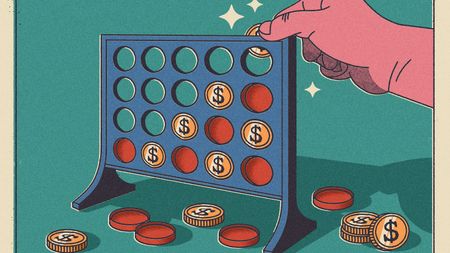AV Homes: A Cheap Stock With Rich Potential
This small homebuilder's first-quarter results were impressive, with big gains in number of dwellings sold and other key measures.

With the market near a record high, it takes extra effort for a value investor like me to find promising stocks. So when I was recently assigned to write a piece about attractive stocks selling for single-digit prices, I was determined to search broadly. I ended up looking at about 75 companies and eliminated all but eight.
Sorry prospects or high valuations quickly nixed most of the candidates. But a small homebuilder got cut for a different reason. In the weeks that it took to put together my story, the share price of AV Homes (symbol AVHI) soared above $10 and made the stock ineligible. After conducting some research, I bought 1,000 shares at $11.90 apiece for my Practical Investing portfolio.
AV Homes was a bit of a jack-of-all-trades in the early 2000s. It sold title insurance, offered cable-TV services and operated a small water utility. But its main business was real estate. The company developed communities for the 55-and-over set as well as industrial and commercial properties, primarily in Florida and Arizona, where it is based. The firm generated stellar revenue and profit growth from 2002 through 2006. But the Great Recession hit the Sunbelt hard, and AV lost money every year from 2008 through 2014.

Sign up for Kiplinger’s Free E-Newsletters
Profit and prosper with the best of expert advice on investing, taxes, retirement, personal finance and more - straight to your e-mail.
Profit and prosper with the best of expert advice - straight to your e-mail.
The stock, which peaked just shy of $85 in 2007, slid below $6 in 2011, when AV reorganized to focus on residential development. When I discovered AV in February, it traded for a hair under $10, but the stock popped some 20% in the weeks after the firm issued fourth-quarter results, which featured a doubling in revenues and a ninefold increase in earnings from the same period in 2014. Plus, AV reported its first yearly profit since 2007. First-quarter results were equally impressive, with big gains in every important measure, from the number of dwellings sold to average selling prices and, of course, profits and revenues.
To learn more, I tapped my Arizona contacts to find people who had bought AV homes. Linda Baldwin, a physician’s assistant who bought into AV’s Encore development in Mesa, Ariz., last December, is still waiting for some fixes to the home, but she has no regrets about the purchase. “On Tuesday, I play dominoes. Wednesday is bocce ball. Saturday, they had a concert,” she says. “I love the people. We have a travel club and a book club and an arts and crafts center. I’m having a blast.”
Big-tech stumbles. Analysts expect AV’s earnings to double in 2016 and jump another 50% in 2017. That said, it’s wise to be skeptical of earnings estimates, particularly in the late stages of an economic expansion. Disappointing results in April from Apple (AAPL), which I hold in the Practical Investing portfolio, and Microsoft (MSFT), which I just sold, underscore the point. In both cases, earnings for the January–March quarter came in well below analysts’ forecasts, and the stocks tanked.
Short-term price drops rarely rattle me, but I worry about stocks that have reached lofty valuations thanks to what appear to be rosy projections. That’s the main reason I sold my Microsoft shares. Even after the decline, the stock, at $50, sells for 19 times projected year-ahead earnings, which seems too high for a company with only moderate growth and leaves the stock vulnerable to another spill if there’s more disappointing news.
Apple and AV both trade for about 10 times estimated earnings. That, in my view, creates a margin of safety that should allow the stocks to shrug off a few quarters of subpar results. I don’t know when the bull market might end, but when it does, I expect stocks selling for modest price-earnings ratios to provide some shelter from the bear market that follows.
Get Kiplinger Today newsletter — free
Profit and prosper with the best of Kiplinger's advice on investing, taxes, retirement, personal finance and much more. Delivered daily. Enter your email in the box and click Sign Me Up.

-
 Stock Market Today: Stocks Are Mixed Before Liberation Day
Stock Market Today: Stocks Are Mixed Before Liberation DayMarkets look forward to what comes with the reordering of 80-year-old global trade relationships.
By David Dittman Published
-
 Stagflation: What It Is and Why Retirees Should Care
Stagflation: What It Is and Why Retirees Should CareStagflation — the economic bogeyman of the 1970's — may return to the US. Here's what it could mean to your retirement.
By Donna Fuscaldo Published
-
 How to Beef Up Your Portfolio Against Inflation
How to Beef Up Your Portfolio Against Inflationinvesting These sectors are better positioned to benefit from rising prices.
By Karee Venema Published
-
 Taxable or Tax-Deferred Account: How to Pick
Taxable or Tax-Deferred Account: How to PickInvesting for Income Use our guide to decide which assets belong in a taxable account and which go into a tax-advantaged account.
By Nellie S. Huang Published
-
 Smart Investing in a Bear Market
Smart Investing in a Bear Marketinvesting Here's how to make the most of today’s dicey market.
By Anne Kates Smith Published
-
 How to Open a Stock Market Account
How to Open a Stock Market Accountinvesting Investing can be fun, but you need a brokerage account to do it. Fortunately, it’s easy to get started.
By Rivan V. Stinson Published
-
 The Right Dividend Stock Fund for You
The Right Dividend Stock Fund for YouBecoming an Investor Dividend stock strategies come in many different flavors. Here's what to look for.
By Adam Shell Published
-
 Alternative Investments for the Rest of Us
Alternative Investments for the Rest of UsFinancial Planning These portfolio diversifiers aren't just for the wealthy.
By Adam Shell Published
-
 When Actively Managed Funds Are Worth It
When Actively Managed Funds Are Worth ItBecoming an Investor For some investment categories, choosing an actively managed fund makes sense.
By Adam Shell Published
-
 Make Your Portfolio More Defensive
Make Your Portfolio More DefensiveBecoming an Investor Risk is rising on Wall Street. Make sure you're prepared.
By Adam Shell Published